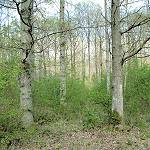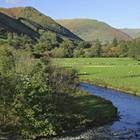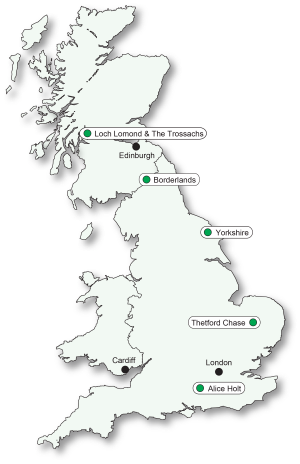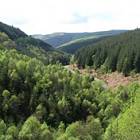Overview
Research forests are areas designated for woodland-based studies that have the potential to deliver operationally-relevant information about the management of woodlands in Great Britain. An important characteristic of Research Forests, particularly when being used for long-term monitoring activities, is that they continue to be managed in line with the forest management objectives already defined for each individual woodland area.
The potential to develop comprehensive datasets, often spanning decades, whilst simultaneously encouraging positive collaboration between forest managers and scientists, makes Research Forests an ideal test bed for experimentation, case studies, woodland-based demonstration areas, and comparative research.

Features and benefits
Access to legacy data
Research Forests provide a very special research environment and have the potential to generate the long-term datasets that are crucial for ecological studies that record changes over time.
New data are gathered in a well-characterised environmental framework and can be readily compared against long term trend data, allowing unexpected links and patterns to be more easily recognised.
Using existing data, such as those from long-term monitoring plots, can strengthen research proposals, e.g., to funding bodies, and can broaden research projects beyond their original scope.

Collaboration between forest managers and scientists
Within the research forest environment, the promotion of close collaboration between forestry practitioners and scientists enables findings to be more easily tested and fast-tracked into operational use
Showcase studies
Studies can be showcased to a wide audience, including students of all ages, the public, forestry practitioners and policymakers, highlighting the importance of forestry science through outdoor workshops and explanatory material.
Internationally, research forests have been pivotal in increasing understanding of the interactions between forests and the wider environment, including demonstrating the possible effects of climate change. Their findings have helped shape international policies on pollution and sustainable forest management.

The Research Forests

- Loch Lomond and The Trossachs (Stirlingshire, Scotland).
Launched in March 2014 in association with Forestry Commission Scotland (now Forestry and Land Scotland). - Borderlands Research Forest.
Recognised in 2024 following nearly a century of pioneering research into the effects of afforestation/deforestation and also the intensive monitoring of forests, soils, water/air quality and carbon fluxes. Future priorities will include tree species diversification and peatland restoration. - Yorkshire Research Forest.
Designated in 2024, reflecting its leading role in hosting long-term studies into the transformation of conventional plantations towards mixed species, structurally-diverse woodlands managed under ‘continuous cover’ systems, species and adaptability trials. - Thetford Chase Research Forest.
Agreed as a research forest in 2024, this area is characterised by climatic and edaphic extremes and is of great interest for monitoring woodland condition, species performance and structural transformation at the very forefront of the increasing challenges from droughts and tree pathogens in England. - Alice Holt Forest (Hampshire, England).
Historically Britain’s first research forest, set up in 2006 in conjunction with Forest Enterprise (now Forestry England) in England. - Coedwig Ymchwil Cymru
(English-language description below.)
Mae Coedwig Ymchwil Cymru yn rhan o rwydwaith Coedwig Genedlaethol Cymru (NFfW). Mae’r dull newydd hwn yn mwyafu cyfleoedd i alluogi ymchwil sy’n seiliedig ar goed yng Nghymru i gael ei pharu’n optimaidd â choetir a safle, a bydd hefyd yn galluogi atgynhyrchu gwaith o’r fath hwn yn haws mewn lleoliadau addas ledled y wlad. Mae rhagor o wybodaeth ar gael ar dudalen gwe Coedwig Ymchwil Cymru.
Research Forest for Wales
The Research Forest for Wales sits within the National Forest for Wales network. This novel approach maximises opportunities for tree-based research in Wales to be optimally matched to both woodland and site, whilst also allowing for replicates of this work to be more easily established at suitable locations across the country. More information is available on the Research Forest for Wales web page.
Further information
If you would like more details on the research forests across GB, please refer to the location-specific links provided above.

